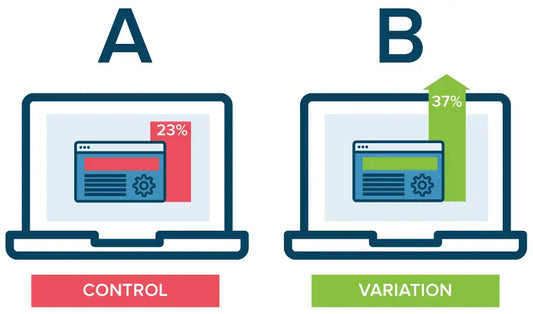Creating an effective category tree is crucial for the growth and success of your e-commerce business. A well-structured category tree helps customers navigate your website, find products easily, and enhances their overall shopping experience. In this two-part guide, we will explore the steps to build a category tree that drives growth and boosts your e-commerce performance.
-
Analyze Your Product Range: Start by thoroughly analyzing your product range and understanding the various categories and subcategories that exist. Identify the core product groups and consider how they can be organized logically. Take into account factors such as product attributes, customer preferences, and sales patterns. This analysis will form the foundation of your category tree.
-
Consider User Experience: Put yourself in your customers' shoes and think about how they would navigate your website. Consider their expectations, preferences, and the most efficient way to present your products. Ensure that your category tree is intuitive and user-friendly, reducing the number of steps required to find desired items. The goal is to provide a seamless and enjoyable shopping experience.
-
Implement a Hierarchical Structure: A hierarchical structure organizes your categories and subcategories in a logical and hierarchical manner. Start with broader categories at the top level and gradually drill down to more specific subcategories. This structure simplifies navigation and allows customers to easily locate products within the relevant category.
-
Use Clear and Descriptive Category Names: Ensure that your category names are clear, descriptive, and easy to understand. Use keywords that align with customer search queries and reflect the nature of the products in each category. Avoid vague or ambiguous names that may confuse customers and make it harder for them to find what they're looking for.
-
Group Related Products: Grouping related products under relevant categories makes it easier for customers to discover additional items they might be interested in. Consider creating subcategories based on product features, types, or themes. For example, if you sell clothing, you could have categories like "Men's Apparel," "Women's Apparel," and further subcategories such as "Tops," "Bottoms," and "Accessories."
-
Leverage Customer Insights: Utilize customer insights and feedback to optimize your category tree. Pay attention to search queries, customer behavior, and purchase patterns. Identify any pain points or areas where customers struggle to find products. By continuously refining your category structure based on customer insights, you can provide a more tailored and personalized shopping experience.
The significance of a well-structured category tree for any e-commerce business is often underestimated. Let's put ourselves in the shoes of a customer who is looking to buy sunglasses for an upcoming vacation and visits a website in search of them.
What emotions arise when we enter a page and can't find what we're looking for because the site doesn't facilitate the user's web journey? Frustration is the most common feeling, and it often leads to leaving the site and seeking alternatives from the competition. In other words, we have accomplished the hardest part, attracting a customer to our storefront, but due to the lack of a navigation-friendly layout, we end up losing that customer.
This problem is frequently observed in various e-commerce platforms we work with. Having a deficient structure means relying on the patience of customers for conversions, when, in reality, we can proactively address this issue to positively impact our sales objectives.
What factors should be considered when creating our category tree?
- Align with your objectives: What does your e-commerce business aim to achieve? While all e-commerce platforms have sales objectives, the approach differs for those selling products in bulk, positioning seasonal items, or categorizing products according to different product lines.
Having a clear understanding of this point ensures that you take the right steps towards your specific objectives. "Purpose is a compass that never fails and always points to the North." - David Topí. During this phase, we recommend taking the time to define your ultimate goals.
- Identify your flagship products: Think about the products that generate the most revenue, those that are most popular, or those with higher profit margins. However, always keep your objectives in mind. If you aim to position certain products at the top of the hierarchy, identify those products.
Let's return to the example of sunglasses. We could say that the flagship products would always be the latest season's items since one of the business goals is to drive conversions and traffic towards the newest releases.
- Stick to the 3-click rule: The frustration caused by the difficulty of purchasing a product on an e-commerce platform can be reduced by adhering to the 3-click rule. Customers shouldn't be forced to "stumble upon" smaller products or navigate through extensive category lists to find what they are looking for.
Numerous studies on short-term memory demonstrate that we can retain between five and nine elements in our minds. However, once we surpass that limit, we tend to feel overwhelmed. To avoid decision fatigue, it is ideal for items to be easily found within "three clicks" of the starting point. This may not be feasible for all items, especially if you have a large inventory, but it should be applied to your key products.
- Would this be a good landing page? When building your category pages, consider how well they would function as landing pages for PPC, SEO, or email list traffic. Would you send traffic to these pages? If so, how well would they perform?
If you believe that the performance would be low, it's time to reconsider the page's content. Do you have too many product types? Are there not enough? Should you add a brief introductory text to set expectations? Could you include breadcrumbs or related categories to help customers navigate if this page isn't adequate?
It's always important to ask questions related to the tree structure we're about to build. Remember that it will shape your website and the menu that every user will see upon entering. Essentially, your category tree serves as the structure and design to convince and facilitate the customer's journey.
As a recommendation, it's crucial to listen to external perspectives from individuals not directly involved in the category tree creation process, as their insights can be highly valuable.




